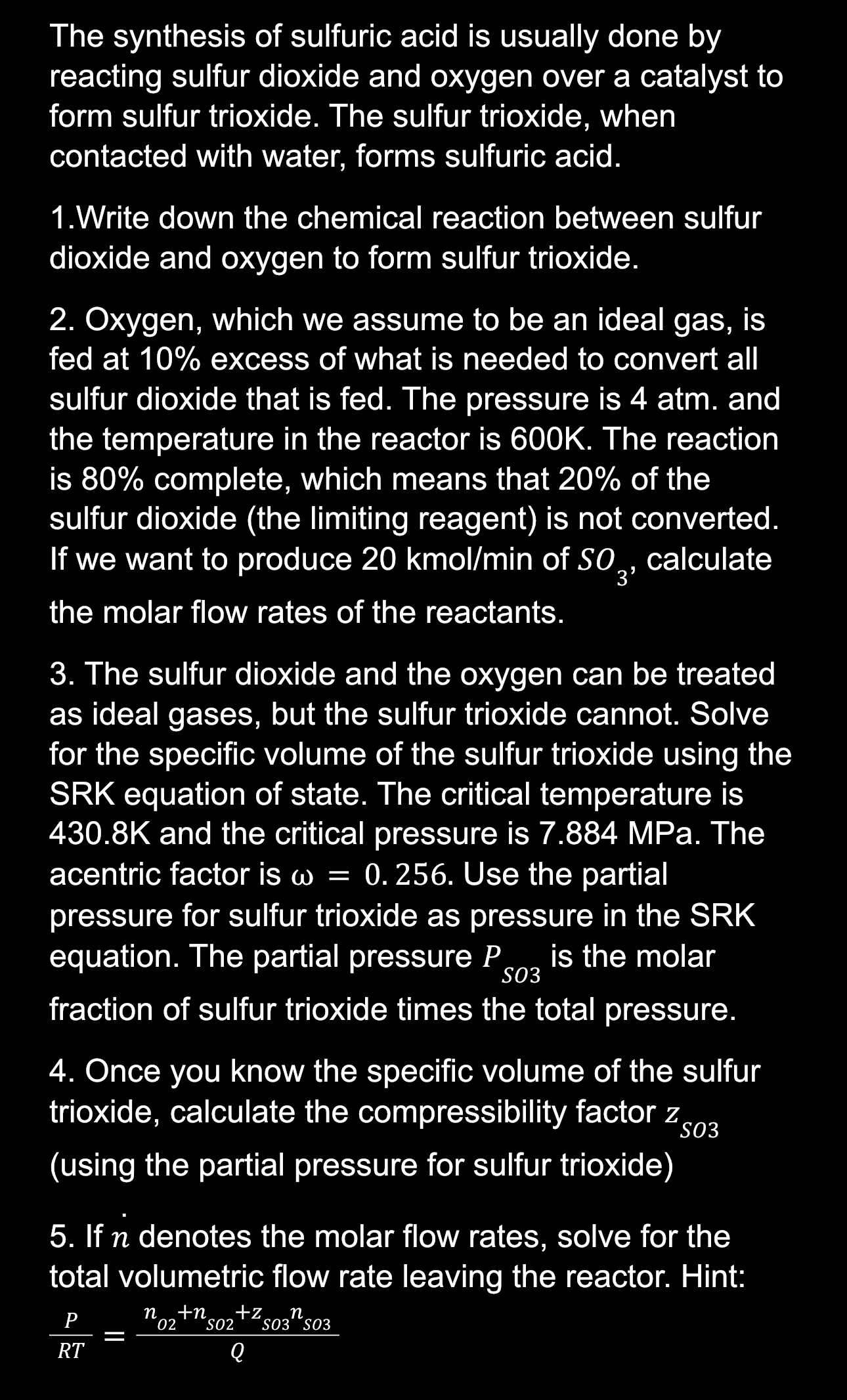Answered step by step
Verified Expert Solution
Question
1 Approved Answer
The synthesis of sulfuric acid is usually done by reacting sulfur dioxide and oxygen over a catalyst to form sulfur trioxide. The sulfur trioxide, when
The synthesis of sulfuric acid is usually done by reacting sulfur dioxide and oxygen over a catalyst to form sulfur trioxide. The sulfur trioxide, when contacted with water, forms sulfuric acid.
Write down the chemical reaction between sulfur dioxide and oxygen to form sulfur trioxide.
Oxygen, which we assume to be an ideal gas, is fed at excess of what is needed to convert all sulfur dioxide that is fed. The pressure is atm. and the temperature in the reactor is The reaction is complete, which means that of the sulfur dioxide the limiting reagent is not converted. If we want to produce kmo of calculate the molar flow rates of the reactants.
The sulfur dioxide and the oxygen can be treated as ideal gases, but the sulfur trioxide cannot. Solve for the specific volume of the sulfur trioxide using the SRK equation of state. The critical temperature is and the critical pressure is MPa. The acentric factor is Use the partial pressure for sulfur trioxide as pressure in the SRK equation. The partial pressure is the molar fraction of sulfur trioxide times the total pressure.
Once you know the specific volume of the sulfur trioxide, calculate the compressibility factor using the partial pressure for sulfur trioxide
If denotes the molar flow rates, solve for the total volumetric flow rate leaving the reactor. Hint:

Step by Step Solution
There are 3 Steps involved in it
Step: 1

Get Instant Access to Expert-Tailored Solutions
See step-by-step solutions with expert insights and AI powered tools for academic success
Step: 2

Step: 3

Ace Your Homework with AI
Get the answers you need in no time with our AI-driven, step-by-step assistance
Get Started


